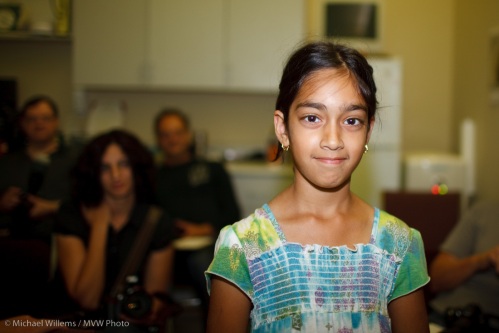Here’s a few demo shots from a kind volunteer (a student’s daughter) at a recent camera course I taught. This bit was about “flash”.
First, pop up the flash and use “P” or “Auto” mode and you get the picture that makes people hate flash:
Then enable “Slow flash” or “Night portrait mode” and you get a better picture.. yeah, it’s better. But not all that much:
Then put your big flash on top of the camera (e.g. an SB-900 or 580EX II, or their slightly smaller equivalents SB-600 or 430EX II). And aim that flash behind you.
Yeah. Behind. So it bounces off ceilings and walls behind you.
Much better. Much. See:
And then if you want extra “character” and “depth”, bounce off a side wall, if you can find one.
Now you get three-dimensionality, depth, character as well:
I mean – how cool is that? And all this was done in “P” mode, with no special stuff, with no settings on the camera, no required knowledge of aperture, no complicated techniques.
Flash is wonderful once you learn how to play with it. And it is easier than ever.





What do you think of using the “catchlight panel” on the Canon flashes? I have a 580EX Mark 1. I see in your last example above you have a nice catchlight in her eyes.
Thank you for the idea of bouncing the flash behind or to the side.
Thanks for the kind words!
Yes. The little white panel is great if it is the only way to get some light going to the eyes, e.g. when bouncing off the ceiling. Sure thing.
I also use the Honl reflectors – bounce card is very easy to put on-off and very effective.
I spent an hour last night making some informal portraits twisting the head of the flash in directions it had never been. I didn’t know you could do so much with a single light.
For each photo I had to write down what I’d done. It would be good if the flash would communicate its orientation to the camera so it could record it in the picture’s EXIF.
Flash direction: 0 – 360; Flash elevation: -5 – 90.
This is simple for a single on-camera flash.
It would need to handle a multi flash master / slave setup using an array of such pairs – but how to record the position of off camera flash relative to the camera?
If a manufacturer could solve that I think it would be a competitive advantage.
I think I will do a better test and write about it on my blog – with a link to you for the inspiration.